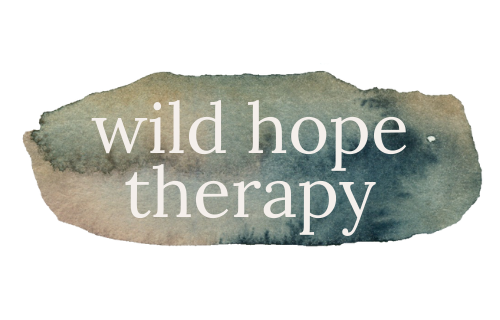holding on tight, right beside you
Content Warning: Election Results
There are a handful of phrases that we as therapists use so regularly I think most of us are probably internally chuckling or rolling our eyes at ourselves whenever we utter them to a client. But they get repeated because they’re just that good. Among them “Where do you feel that in your body?” or “Two conflicting things can be true!” Another that has been coming up a lot since the results of last Tuesday night is “Feeling your feelings won’t make them worse.”
As therapists, one of our primary jobs is to help people feel their feelings without becoming consumed by them. The fear, or anxiety, that by letting ourselves really feel will lead to catastrophe or implosion or self-destruction begets more anxiety, more fear, more dissociation. By feeling our feelings, our brains and body are able to process the chemicals and physical responses that come along with those emotions and return to homeostasis. From there we can move on with our lives or take action. Feeling the feeling is both a function of learning, and of regeneration.
As you can imagine, social media is plentiful with hot takes on how we should feel since Tuesday. You should be grieving; you should be finding joy; you should be angry; you should be taking action; you should be hopeful; you should be despondent. And there of course is a rebuttal for each of these options. As therapists, we know the truth. Grief is not a linear process. And all of these feelings are normal. We will feel each of them, and at times, we will feel nothing. I know personally I was tearful on Wednesday morning talking to our team at our monthly meeting. Writing this, to be honest, I’m pretty burnt out.
That meeting, however, was a reminder that healing happens in community. And it is also where we harness strength. While we shared our unique responses to what had just happened, our therapist, Madison Eagle, LSW, offered this: “Revolution and progress has been and always will be found in community and connection.”
Whether that is with your neighborhood, your school district, your chosen family. There is power in the collective, and by nature, a collective is a gathering of whatever resources we each have to support the whole, and find a way forward.
We want our practice to be one of those places. Whether for our therapists who come together as professionals who are passionate about individual mental health as well as the systems and policies that impact our clients, or, tangentially, for our clients, who we hope feel safety and connection when working with our clinicians.
The longing for community was exactly why Wild Hope was created. I was working alone during the pandemic when everything was uncertain and we were all isolated. And at the time, witnessing another campaign cycle that was very similar to this one.
Of course that election had a different outcome. But that didn’t mean that everything was ok, or that our clients didn’t still suffer because of systemic oppression or harmful policies. Especially in Ohio, our colleagues at organizations like NASW-OH, The Ohio Women’s Alliance, Chamber of Mothers, and countless others were fighting every day to make people safer in our state.
The phrase “wild hope” was taken from a poem written by a fearless poet who also happens to be one of my best friends, Katie Schmid. The reason I used it as the name for the practice is because at the time that’s what it felt like I was doing: hoping, wildly. Hoping, when maybe I shouldn’t have been. But, I knew at the time I was never going to stop doing it. And so Wild Hope Therapy was born.
First of all, it is very important to mention that I am a white, straight, married, middle class, cis-gender woman, writing to you from a cozy, progressive-leaning suburb. That’s quite a list. My ability to muster energy or optimism is not only made possible by that comprehensive panel of privilege, it is absolutely essential that I, and those like me, mine all of that extra capacity bestowed on us, and use it to fight on behalf of those who are much more weathered and worn down–and in much more danger–than we are.
Even so, I’m not exactly feeling super hopeful on my own right now. Trying to find joy and experience gratitude, yes–but I don’t have to tell you about the fear and despair that has been hovering the past week. Having a community, however, means we can bring the little hope we do have and put it all together so that we can pull each other along.
So if our practice is one of those communities or collectives for you, know that we will be here no matter what. Holding space for our clients; advocating for our community; and supporting each other. And we will all put our bits of hope and scraps of resilience together so that we have a whole mountain of whatever it is that keeps us going.
In the words of the radiant and hilarious Jessica Williams, ““No matter what happens, we have to throw our arms around the people who need us the most and hold the f— on.”
Holding on tight, right beside you,
Stephanie Purdom, LISW-S, PMH-C
Founder + Executive Director of Wild Hope Therapy
